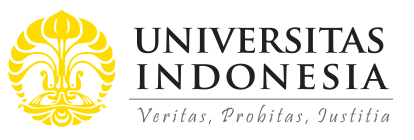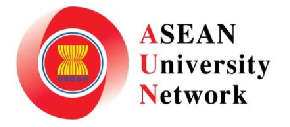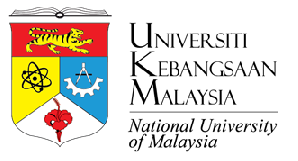
Abstract
Conventional organic waste management methods often lead to environmental degradation and underutilization of valuable resources. In rural areas, such as Polaman Village, limited awareness and inefficient disposal systems exacerbate these issues, thus necessitating innovative and sustainable solutions. This study explores black soldier fly larvae (BSFL) bioconversion as a community-based solution for organic waste management, addresses environmental challenges, and promotes economic empowerment by converting waste into valuable by-products. The study employed a mixed-methods approach, beginning with baseline assessments of waste generation and existing management practices to identify community needs. Educational workshops and hands-on training sessions introduced BSFL bioconversion techniques to local stakeholders. Focus group discussions (FGDs) were conducted to facilitate dialog and collaboration between Polaman residents, the Polaman Resik Sejahtera Waste Bank, and Universitas Diponegoro. Continuous mentoring and pilot trials were conducted to ensure proper adoption and to demonstrate the feasibility of the proposed system. The results reveal that BSFL bioconversion significantly reduces organic waste while producing valuable by-products such as compost and larvae. These findings demonstrate the potential of BSFL bioconversion to align with circular economy principles, contributing to environmental sustainability and economic resilience. The project serves as a scalable model for addressing organic waste challenges in rural communities while advancing the green economy agenda.
References
Arshad, M. Y., Saeed, S., Raza, A., Ahmad, A. S., Urbanowska, A., Jackowski, M., & Niedzwiecki, L. (2023). Integrating life cycle assessment and machine learning to enhance black soldier fly larvae-based composting of kitchen waste. Sustainability, 15(16), Article 12475. https://doi.org/10.3390/su151612475
Handayani, D., Naldi, A., Larasati, R. R. N. P., Khaerunnisa, N., & Budiatmaka, D. D. (2021). Management of increasing economic value of organic waste with Maggot cultivation. IOP Conference Series: Earth and Environmental Science, 716, Article 012026. https://doi.org/10.1088/1755-1315/716/1/012026
Karahan, D., & Dayisoylu, K. S. (2020). The importance of bioconversions of today. Open Access International Journal of Agriculture Forestry and Life Sciences, 4(1), 1–7. https://dergipark.org.tr/tr/pub/ijafls/issue/51802/648911
Kementerian Lingkungan Hidup dan Kehutanan. (2023). Data produksi sampah organik nasional pada 2023 [National inorganic waste production data in 2023].
Kennes, C. (Ed.). (2018). Bioconversion processes. MDPI Books.
Kharola, S., Ram, M., Goyal, N., Mangla, S. K., Nautiyal, O. P., Rawat, A., Kazancoglu, Y., & Pant, D. (2022). Barriers to organic waste management in a circular economy. Journal of Cleaner Production, 362, Article 132282. https://doi.org/10.1016/j.jclepro.2022.132282
Kim, C.-H., Ryu, J., Lee, J., Ko, K., Lee, J.-Y, Park, K. Y., & Chung, H. (2021). Use of black soldier fly larvae for food waste treatment and energy production in Asian countries: A review. Processes, 9(1), Article 161. https://doi.org/10.3390/pr9010161
Magni, C. A. (2015). ROI and profitability index: A note on managerial performance. SSRN Electronic Journal. https://doi.org/10.2139/ssrn.2546917
Mihai, F.-C., Gündoğdu, S., Markley, L. A., Olivelli, A., Khan, F. R., Gwinnett, C., Gutberlet, J., Reyna-Bensusan, N., Llanquileo-Melgarejo, P., Meidiana, C., Elagroudy, S., Ishchenko, V., Penney, S., Lenkiewicz, Z., & Molinos-Senante, M. (2021). Plastic pollution, waste management issues, and circular economy opportunities in rural communities. Sustainability, 14(1), Article 20. https://doi.org/10.3390/su14010020
Ogunmakinde, O. E., Egbelakin, T., & Sher, W. (2022). Contributions of the circular economy to the UN sustainable development goals through sustainable construction. Resources, Conservation and Recycling, 178, Article 106023. https://doi.org/10.1016/j.resconrec.2021.106023
Rehman, K., Hollah, C., Wiesotzki, K., Rehman, R., Rehman, A, Zhang, J., Zheng, L., Nienaber, T., Heinz, V., & Aganovic, K. (2023). Black soldier fly, Hermetia illucens as a potential innovative and environmentally friendly tool for organic waste management: A mini-review. Waste Management & Research: The Journal for a Sustainable Circular Economy, 41(1), 81–97. https://doi.org/10.1177/0734242X221105441
Rifai, A. A., & Permata, F. S. (2023). The potency of BSF maggot culture for green economic resilience. Proceedings of the 2022 Brawijaya International Conference, 700–709. https://doi.org/10.2991/978-94-6463-140-1_70
Siva Raman, S., Stringer, L. C., Bruce, N. C., & Chong, C. S. (2022). Opportunities, challenges and solutions for black soldier fly larvae-based animal feed production. Journal of Cleaner Production, 373, Article 133802. https://doi.org/10.1016/j.jclepro.2022.133802
Taherdoost, H. (2022). What are different research approaches? Comprehensive review of qualitative, quantitative, and mixed method research, their applications, types, and limitations. Journal of Management Science & Engineering Research, 5(1), 53–63. https://doi.org/10.30564/jmser.v5i1.4538
Walling, E., & Vaneeckhaute, C. (2020). Greenhouse gas emissions from inorganic and organic fertilizer production and use: A review of emission factors and their variability. Journal of Environmental Management, 276, Article 111211. https://doi.org/10.1016/j.jenvman.2020.111211
Recommended Citation
Sumardiono, Siswo; Amalia, Rizka; Dhiya’ulhaq, Syaikha Butsaina; Ilmi, Nurika Nazilatul; and Ariyanto, Hermawan Dwi
(2024).
Black Soldier Fly Larvae (BSFL) Bioconversion for Circular Economy: A Study in Polaman Village.
ASEAN Journal of Community Engagement, 8(2), 217-231.
Available at: https://doi.org/10.7454/ajce.v8i2.1335
Included in
Agricultural and Resource Economics Commons, Biotechnology Commons, Environmental Engineering Commons, Other Chemical Engineering Commons







